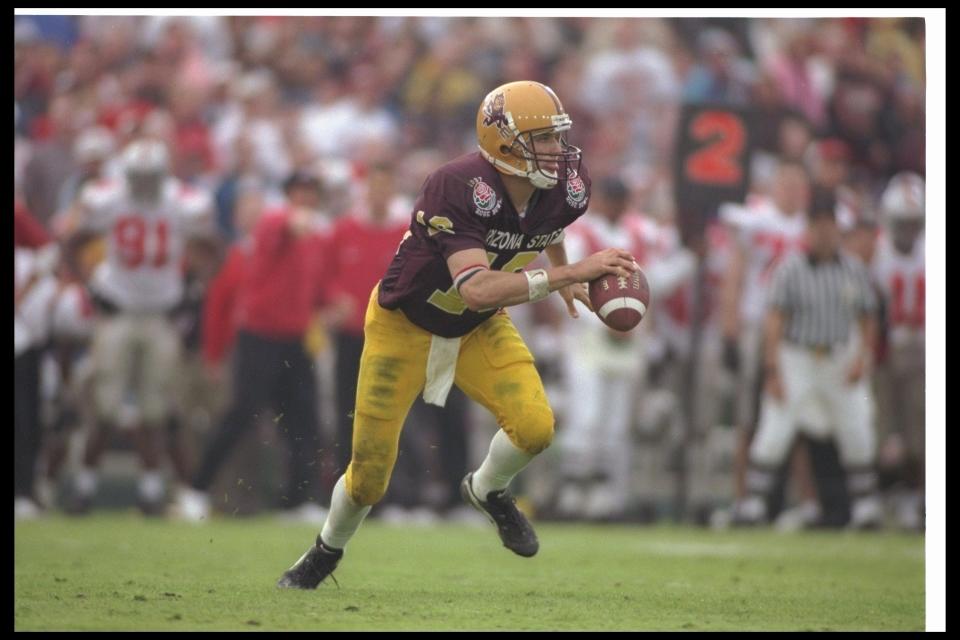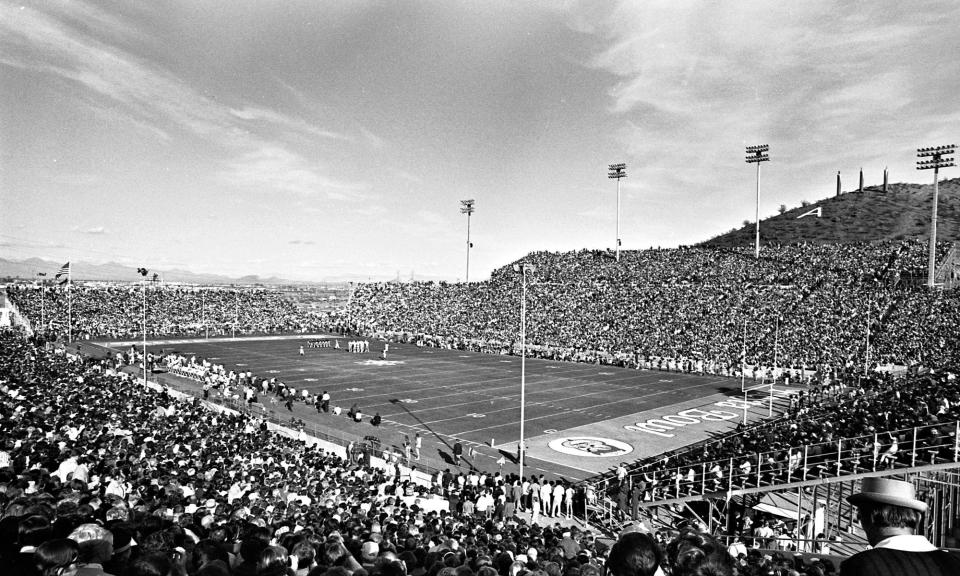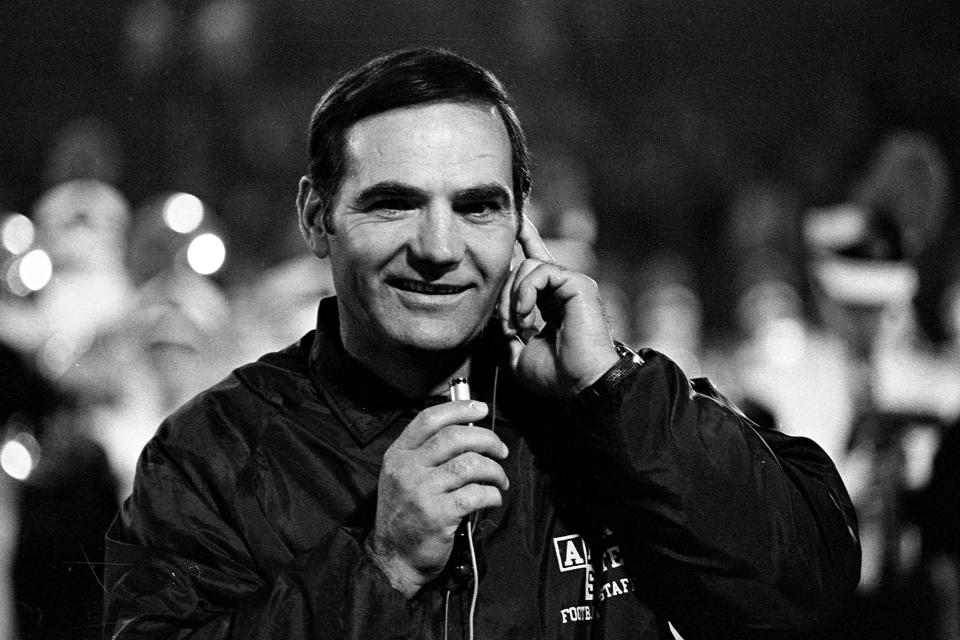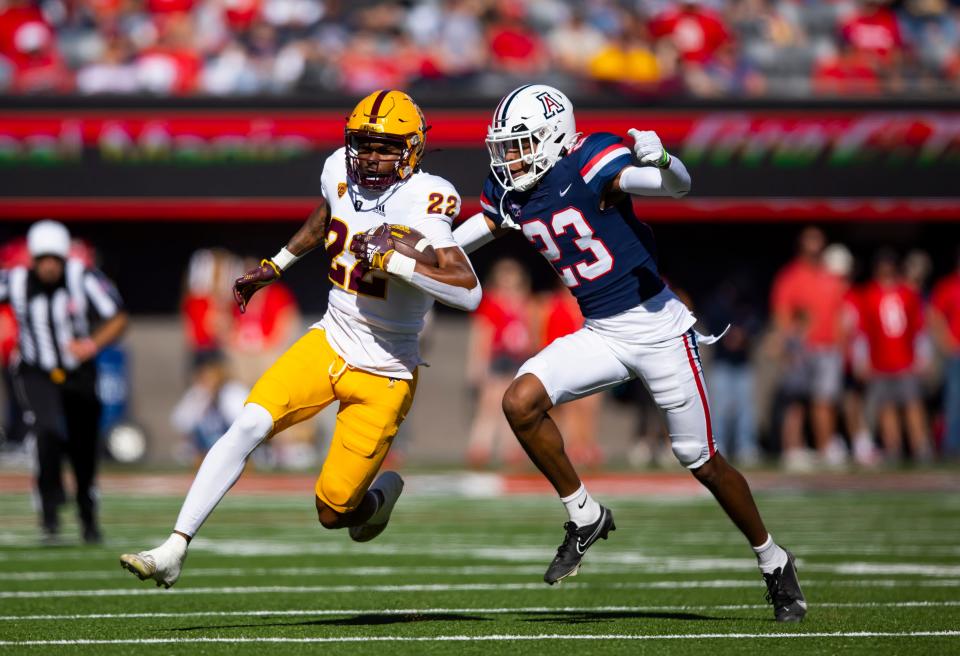Arizona's roots in the Pac-12: Why the Wildcats wanted to join and Sun Devils didn't

Arizona and Arizona State, like most of the members of the Pac-12, have been caught up in athletic conference expansion speculation, which led to both schools, along with Utah, leaving for the Big 12 on Friday.
Once upon a time, in the 1970s, the schools were courted by what was then the Pac-8. They were members of the Western Athletic Conference at the time, and the move would change the trajectory of both athletic programs, leading them to where they are today.
ASU was an attractive candidate for an expanded Pac-8 back in the mid-1970s. Under legendary football coach Frank Kush, the Sun Devils were a WAC powerhouse that often drew national attention for knocking off teams from more prominent conferences.
But Kush and ASU's administration were reluctant to join the Pac-8, which then consisted of California, Stanford, USC, UCLA, Oregon, Oregon State, Washington, and Washington State, all teams that could present a bigger challenge for the Sun Devils.
Arizona, on the other hand, took a different view.
When John Sandbrook, assistant to UCLA Chancellor Chuck Young, made visits to Tucson and Tempe for expansion talks in March of 1976, he received different receptions from both schools. Arizona was on board with joining, while ASU still wasn’t swayed to leave the WAC.

The Sun Devils had enjoyed success in the Fiesta Bowl, which was founded in 1971 in part to help ASU break into what was then a limited bowl lineup that favored more well-known programs. The bowl game at the time was contractually bound to host the WAC champion — as long as the conference had eight teams.
In the first three years of the Fiesta Bowl’s existence, ASU won all three in its home stadium. ASU had a down season (7-5) in 1974, but then had its best season in school history to date in 1975, finishing 12-0 and defeating No. 6 Nebraska in the Fiesta Bowl. The Sun Devils finished No. 2 in the final Associated Press rankings behind Oklahoma. In 1976, USC (11-1) finished No. 2 and posed a major recruiting threat in the West Coast.
Leaving the familiarity and success of the WAC behind for the the Pac-8 wasn’t something ASU wanted given the success it had.
"They need us, we don't need them," Kush said in the spring of 1976.
Interference from Arizona
It had to fall onto Arizona for ASU to consider taking one of the of the biggest steps in the school’s history.
ASU still didn’t want to join the conference even after receiving the formal invitation, but Arizona was not going to let the school squander the opportunity.
More: Reluctant to leave WAC, Arizona State has Arizona to thank for pushing move into Pac-8
A rejection letter was prepared for the ASU and Arizona presidents dated Sept. 15, 1976, to send to UCLA Chancellor Chuck Young declining the offer.
"It is our belief that circumstances do not justify a change in conference membership at the present time," the letter read. "We do not believe the formation of a Pacific-10 would best meet the needs of the schools involved ... additional negotiations would not appear to be mutually beneficial."
But that letter didn’t represent the wishes of both parties and a handwritten note was attached to it that said then-Arizona President John Schaefer did not want to send the letter. So it never was sent to Young.

Paving the way for expansion
There were several moving parts involved in getting the Pac-8 to even extend a formal invitation to the Arizona schools in 1976.
During a September meeting in San Francisco, Stanford’s representative, Robert Rosenzweig, was subbing in for President Richard Lyman and provided one of seven votes in favor of inviting the Arizona schools.
But Lyman’s absence later became an issue when he joined Washington president John Hogness and rejected expansion.
National reaction: What they are saying about the status of the Pac-12 and what lies ahead
Their rejection was met with hostility from the other schools, particularly USC. President John Hubbard was upset with both and accused them of being "academic snobs" who didn’t think ASU was deserving to be in the same conference.
Young agreed with Hubbard and said, "Don't give me that crap. ASU is no different than Oregon State or Washington State."
Lyman then made a call to Rosenzweig, who supported expansion in that September meeting, and was swayed to approve the expansion. Hogness was threatened by other presidents to vote yes, otherwise he’d be ostracized.
Once he relented, the Arizona schools were approved for the 1978-79 season.

Change of heart
How did ASU go from despising the idea of leaving the WAC to joining the Pac-8?
Since Arizona blocked the rejection letter, ASU’s administration had time to reconsider joining the Pac-8.
Although ASU was a big fish in a small pond in the WAC and would lose that in the new conference, there would be more long-term benefits in being in a larger conference. Financially, a winning season in what would become the Pac-10 would carry far more rewards than a winning season in the WAC.
There was also the benefit of sticking together with Arizona and earning more prestige together in a larger conference.
By then, the sports landscape was evolving. TV revenue started to become more important than ticket sales. On top of that, the report included a 50-50 split of net receipts from conference football games required by the Pac-8 compared to a payout of just $25,000 to a visiting team in the WAC.
Kush knew it would be harder to win after both schools were approved in December, but his time in the Pac-10 was brief. He would only continue as ASU football coach for one full Pac-10 season before losing his job in 1979 for interfering in an investigation into allegations that he struck a player during a game in 1978.

But before he left, the Sun Devils served notice they weren't going to play second fiddle to anyone in the expanded conference.
On Oct. 14, 1978, during the team's first season in the Pac-10, Arizona State stunned No. 2-ranked USC by a score of 20-7 at Sun Devil Stadium to earn the team's first win in the new conference. Just eight seasons later, the Sun Devils won the conference championship and a trip to the 1987 Rose Bowl on New Year's Day, where they defeated Michigan, 22-15.
This article originally appeared on Arizona Republic: Looking back: How Arizona, Arizona State ended up in Pac-12 Conference

